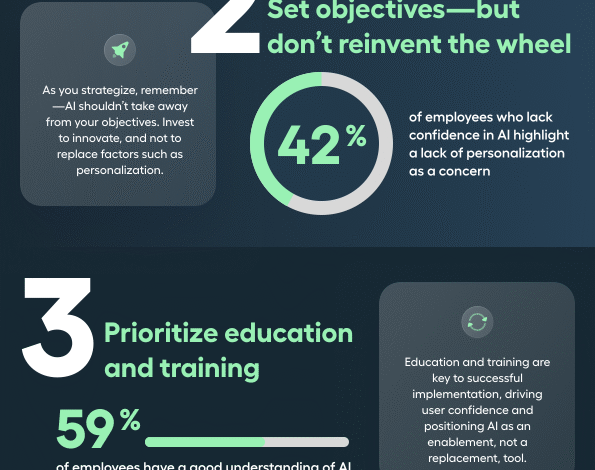China AI Action Plan: Global Cooperation for Tech Advancement

The China AI Action Plan, unveiled recently, marks a significant stride in the nation’s ambition to become a global leader in artificial intelligence. This comprehensive strategy emphasizes collaboration and the establishment of international guidelines for AI development regulation. As the global tech competition escalates, China aims to forge partnerships that encourage artificial intelligence cooperation with other nations, particularly those aligned with its Belt and Road Initiative. By promoting this cooperative framework, China expresses its intent to counterbalance rising US AI initiatives, which are often self-centered and focused on maintaining American dominance. This dynamic sets the stage for a new era in technological advancements, where nations are increasingly seen as either adversaries or collaborators in the quest for AI supremacy.
The recent unveiling of a strategic framework for artificial intelligence by China highlights the country’s drive to boost its role in the tech sector. This initiative, often referred to as the China AI strategy, seeks to enhance global collaboration and establish regulations governing AI advancements. As the landscape of global innovation shifts, particularly with the intensifying competition against the United States, China’s prospects in AI development present unique opportunities for cross-border technological partnerships. The concept of mutually beneficial artificial intelligence cooperation comes to the forefront, suggesting a more interconnected future in technology. As nations prepare for this evolving scenario, the implications of such a strategy could redefine the balance of power in the essential domain of artificial intelligence.
Understanding the China AI Action Plan
The China AI Action Plan represents a strategic effort by the Chinese government to position itself as a global leader in artificial intelligence. This initiative is seen as a response to the increasing competition from the United States, particularly after the recent unveiling of the U.S. AI initiatives aimed at enhancing domestic capabilities and regulating technology to mitigate biases in AI algorithms. By calling for international collaboration, China not only aims to foster technological advancements but also seeks to build a framework for AI regulation that aligns with its interests on the global stage.
Furthermore, the action plan’s emphasis on multilateral cooperation highlights China’s intention to create robust partnerships with developing nations. This approach resonates with its broader Belt and Road Initiative, illustrating a commitment to enhancing technological access and integration across various regions. As the nation promotes its ‘AI plus’ initiative, it signifies a proactive stance in utilizing AI to elevate industrial development not just within China, but also for its partners, thus positioning itself as a pivotal player in the global AI landscape.
Global Tech Competition: China vs. The U.S.
The intensifying tech race between China and the United States underscores the strategic importance of artificial intelligence in national development. The announcement of both the Chinese AI Action Plan and the U.S. AI initiatives signifies the establishment of two distinct camps in this global competition. On one side, the U.S. seeks to maintain its lead through regulations that target perceived biases in AI technology while promoting the export of American innovations. On the other, China is firmly advocating for a cooperative global framework that aims to include multiple stakeholders in the AI development process.
This rivalry is not limited to technological advancements alone; it also encompasses geopolitical dynamics. As countries align themselves with either the Chinese or American model, the implications for international cooperation in artificial intelligence become profound. Analysts suggest that China may leverage its Belt and Road Initiative to draw in developing nations, potentially reshaping global alliances and fostering an alternative to the U.S.-led tech coalition.
The Role of AI Development Regulation in Global Cooperation
AI development regulation has emerged as a critical component of global cooperation in the artificial intelligence sector. With both the Chinese and U.S. AI strategies indicating a focus on regulatory frameworks, the importance of establishing common standards becomes evident. China’s proposal for a global AI cooperation organization aims to address this need by facilitating dialogue between nations to harmonize regulations, thereby reducing barriers that could stifle innovation and collaboration.
Moreover, regulatory frameworks are essential not only for ethical AI deployment but also for fostering trust among stakeholders in different countries. By advocating for transparent and inclusive regulatory practices, the China AI Action Plan seeks to create an environment conducive to collaboration in AI research and application. This emphasis on regulation may pave the way for shared technological endeavors that prioritize safety and equity in AI impacts across various societies.
Implications of AI Cooperation on Global Economics
The push for AI cooperation as outlined in the China AI Action Plan has substantial implications for global economics. By focusing on international collaboration, China is positioning itself to not only attract investment but also to export its technologies and expertise to developing nations. This could result in a shift in the global economic landscape as countries increasingly rely on Chinese AI solutions to drive their local economies.
Furthermore, as nations engage in partnerships for AI development, there is an anticipation of new economic models emerging from these collaborations. Countries that take part in China’s ‘AI plus’ initiative are likely to benefit from technological transfers, leading to a potential uplift in their own economic productivity and innovation capabilities. The result could well be a strengthened network of economies that leverage AI in diverse sectors, which, in turn, enhances global trade and economic interdependence.
China’s AI Strategy: A Multilateral Approach
China’s commitment to a multilateral approach as part of its AI strategy marks a significant shift in how countries can collaborate on emerging technologies. By proposing the establishment of a global AI cooperation organization, China emphasizes the importance of inclusivity in AI development and regulation, catering not only to itself but also to nations with varying technological capacities. This aligns with the broader goals of promoting shared prosperity while tackling global challenges.
Moreover, this multilateral stance is particularly important as it reflects China’s desire to build trust and partnerships with other nations, especially those that may be skeptical of U.S. initiatives. As countries participate in China’s vision for AI, they may be more likely to adopt shared practices and standards that benefit everyone involved, thus creating a unified front that can better address global risks and capitalize on opportunities presented by AI advancements.
The Impact of U.S. AI Initiatives on China’s AI Development
The recent U.S. AI initiatives have undoubtedly influenced China’s approach to its own AI development strategy. Specifically, the measures taken by the U.S. to limit China’s access to advanced semiconductors serve as a catalyst for China to expedite its efforts in creating homegrown alternatives. This competitive pressure forces China to innovate rapidly and rethink its dependencies on foreign technology, pushing the country to enhance its domestic AI capabilities significantly.
Additionally, the competition between the U.S. and China may lead to an arms race in AI technology, where each nation seeks to outdo the other in innovation and application. This rivalry highlights the critical nature of AI in national security, economy, and global influence. As China formulates its AI initiatives in response to U.S. actions, the global tech landscape will continue to evolve, marking an era where AI development is both a strategic and competitive arena.
Challenges and Opportunities in AI Development Regulation
The intersection of regulations in AI development raises both challenges and opportunities for global cooperation. As nations like China and the U.S. establish their own regulatory frameworks, discrepancies may arise that could hinder cross-border collaborations. For instance, differing approaches to ethical AI deployment, bias mitigation, and data privacy can complicate international partnerships and limit the effectiveness of cooperative technologies.
However, these challenges also present unique opportunities for dialogue and innovation. By openly addressing regulatory differences, countries can work towards common standards that enhance trust and foster collaboration in AI projects. This could lead to innovative solutions that not only bridge regulatory gaps but also promote a safer and more equitable deployment of AI technologies worldwide.
International Collaboration: Crucial for AI Advancement
International collaboration is pivotal for the advancement of artificial intelligence, as the complexity of AI technologies inherently transcends national borders. The China AI Action Plan underscores the importance of building cooperative frameworks that enable nations to pool resources, knowledge, and innovations in AI development. By fostering an environment of collaboration, countries can jointly tackle global challenges that require sophisticated technological solutions.
Moreover, the potential for shared learning and best practices through international partnerships can accelerate the development and deployment of AI technologies. Nations can benefit from one another’s experiences and insights, leading to a more robust global ecosystem for AI. This collaborative spirit can not only enhance technological growth but also ensure that diverse perspectives are integrated into the development and regulation of AI systems.
Evaluating the Future of AI in Geopolitics
As the global tech race heats up between China and the U.S., evaluating the future of AI in geopolitics becomes imperative. The strategic significance of AI technologies has made them central to national interests, driving countries to seek dominance and influence in this crucial sector. China’s vision, as articulated in its AI Action Plan, positions it for influential leadership through cooperative efforts that extend beyond its borders.
In contrast, the U.S. aims to consolidate its position through independence and regulatory control over AI developments. This divergence in strategies may lead to increased geopolitical tensions, as nations are compelled to choose sides or navigate a complex landscape of alliances and partnerships. The outcome of these geopolitical maneuverings will fundamentally shape the future trajectory of AI, not only in technology but also in how global power dynamics evolve.
Frequently Asked Questions
What is the China AI Action Plan and how does it relate to global tech competition?
The China AI Action Plan is a strategic initiative launched by China to enhance its position in global tech competition through international cooperation in artificial intelligence development and regulation. The plan emphasizes collaborative efforts with other nations to create standards and frameworks that govern AI technologies, thereby aiming to establish China as a leader in AI innovation.
How does the China AI strategy compare to US AI initiatives?
The China AI strategy focuses on fostering global collaboration and regulating AI technologies through a multilateral approach, as outlined in the recent AI Action Plan. In contrast, US AI initiatives are largely centered on building coalitions to counter China’s advancements and address specific biases in AI models. This difference highlights the diverging paths both nations are taking amid escalating global tech competition.
What role does the China AI Action Plan play in international artificial intelligence cooperation?
The China AI Action Plan plays a crucial role in promoting international artificial intelligence cooperation by proposing the establishment of a global AI cooperation organization. This initiative aims to bring together nations to work collaboratively on the ethical development and regulation of AI technologies, ensuring that innovations serve shared global interests.
How does the China AI Action Plan address AI development regulation?
The China AI Action Plan addresses AI development regulation by advocating for the creation of common standards and regulatory frameworks among participating countries. This approach seeks to minimize disparities in AI development and ensure that AI technologies are deployed responsibly and ethically on a global scale.
Why is the China AI Action Plan significant for global tech competition?
The China AI Action Plan is significant for global tech competition as it positions China as a proactive participant in shaping the future of artificial intelligence. By calling for international collaboration and establishing cooperative mechanisms, China aims to counterbalance US-led initiatives, fostering its influence in the burgeoning AI landscape amidst intensifying geopolitical tensions.
What implications does the China AI strategy have for developing countries?
The implications of the China AI strategy, particularly through its AI Action Plan, are profound for developing countries. China’s commitment to assist these nations with AI technologies, especially as part of its ‘AI plus’ initiative, can enhance their technological capabilities and drive economic growth, while also expanding China’s influence in regions traditionally outside of US and European spheres.
How does the recent China AI Action Plan reflect changes in the global tech landscape?
The recent China AI Action Plan reflects significant changes in the global tech landscape by highlighting the emerging rivalry between the US and China in AI development. It marks a shift towards more organized international cooperation in technology regulation, as both countries vie for leadership in AI innovation, affecting not only bilateral relations but also global tech dynamics.
| Key Point | Details |
|---|---|
| Release of AI Action Plan | China announced a global AI action plan focusing on international collaboration and regulation. |
| Proposal for Global Cooperation Organization | Premier Li Qiang proposed establishing a global AI cooperation organization for better coordination in tech development. |
| AI Conference Opening | Announcement was made during the World Artificial Intelligence Conference in Shanghai. |
| US-China Tech Race | China’s plan follows the U.S. action plan, intensifying competition between the two nations. |
| Strategic Differentiation | China adopts a multilateral approach, while the U.S. builds its own coalition against China. |
| Focus on Developing Regions | China’s ‘AI plus’ initiative aims at integrating AI technology to support less developed economies. |
| Tech Restrictions | US limits China’s access to advanced semiconductors; however, China is developing its alternatives. |
| Engagement with Global Leaders | Eric Schmidt, former Google CEO, met with Shanghai’s Party Secretary prior to the conference. |
Summary
The China AI Action Plan represents a significant strategic move in the global tech competition, encouraging international cooperation while addressing infrastructure needs in developing countries. As the world moves towards a more AI-centric future, China’s commitment to collaboration contrasts sharply with the more unilateral approach adopted by the United States, positioning itself as a leader in the evolving landscape of artificial intelligence.




